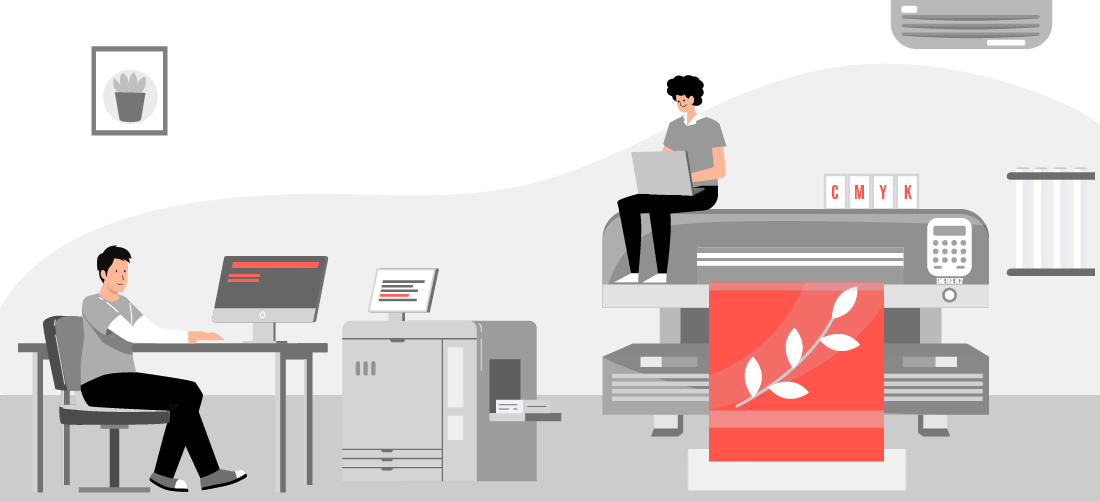Table Of Content
- 1. Brief History of Print Advertising
- 2. Types of Print Advertising
- 2.1. Newspapers
- 2.2. Magazines
- 2.3. Brochures and Flyers
- 2.4. Direct Mail
- 2.5. Billboards and Posters
- 3. Examples of Successful Print Advertising
- 4. Innovative Print Advertising Techniques
- 5. Challenges and Limitations of Print Advertising
- 5.1. Declining Readership
- 5.2. Expensive
- 6. Conclusion

Print advertising is the use of physical printed materials, like newspapers, magazines, brochures, and billboards, to promote products, services, or brands. This form of advertising is one of the oldest methods of reaching an audience and is still widely used today for its ability to target specific groups and create a lasting impact.
Print advertising grabs attention with vivid graphics and emotive text. While there is something about a digital ad that will drive them crazy, a click can make that awareness go away, but for individuals with a brand, print advertising provides a more tangible and lasting engagement opportunity. Whether or not it is a screaming spread in a magazine or a local newspaper advertisement, print advertising does much to raise awareness, provoke action, and spur brand recognition.
Brief History of Print Advertising
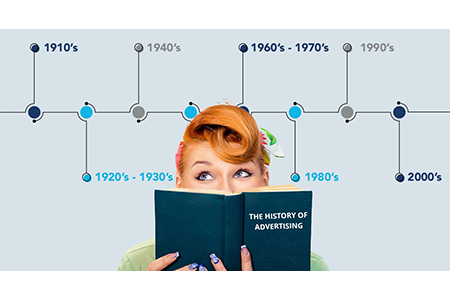
Print advertising is probably the oldest form of printing advertisements. Its invention was in the 15th century with the discovery of the printing press. Over time, it changed from being simple announcements to creatively crafted messages with bold images and catchy headlines. Print ads were really popular in the 20th century and filled the pages of newspapers and magazines with persuasive campaigns. Although the entire mileage is absorbed by digital platforms, print advertising, till now, still retains its place in modern marketing, appealing to audiences, with an experience, which is engaging and can be touched.
Types of Print Advertising
Print advertising has been an essential marketing tool for businesses for decades. Even in the digital age, print remains a powerful medium, offering a variety of methods to reach potential customers. Let’s explore some of the most popular types of print advertising, their unique characteristics, and how they benefit brands.
Newspapers

Overview and advantages of newspaper ads
Newspapers have been a staple in print advertising for generations. With widespread distribution and a wide readership, especially for local and national news, they provide an ideal platform for reaching large audiences. Newspaper ads are often divided into display ads and classified ads, both of which offer different benefits depending on the type of message you wish to convey.
Advantages:
Wide Reach: Newspapers are still widely read by diverse demographics, especially older adults and professionals.
Local Targeting: Local businesses can place ads in regional newspapers to target specific communities.
Credibility: Many people trust newspapers as credible sources, lending credibility to the advertisements within them.
Cost-Effective: Newspaper advertising can be more affordable than other forms of print media, especially for smaller businesses.
Newspaper ads can also be printed on specific pages that match the business’s target audience, offering a strategic advantage.
Magazines

Characteristics of Magazine Advertising and Target Audiences
Magazines are highly focused on niche audiences, making them an ideal choice for businesses targeting specific interests or demographics. Whether you're advertising in fashion, health, or automotive magazines, the ads can be highly tailored to engage the right audience.
Characteristics:
High-Quality Printing: Magazines offer premium-quality paper and vibrant colors, making ads visually striking.
Long Shelf Life: Unlike newspapers, magazines are typically kept around for longer periods, meaning your ad has the potential to be seen multiple times.
Targeted Audiences: Magazine audiences tend to be more loyal and concentrated within particular niches, allowing advertisers to reach exactly who they need.
Advantages:
Engagement: Readers spend more time with magazines, leading to higher ad engagement.
Visual Appeal: The high-quality visuals and larger ad sizes allow for a more creative and memorable representation of the brand.
If your business operates within a specific sector, magazine advertising can help you directly connect with interested buyers who are likely to take action.
Brochures and Flyers
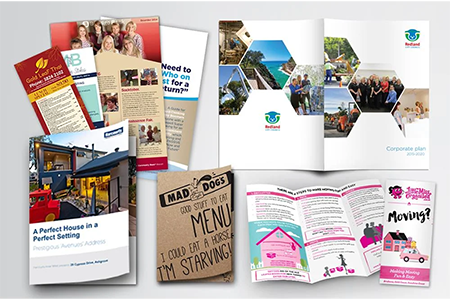
Uses and Benefits of Brochures and Flyers in Advertising
Brochures and flyers are some of the most cost-effective ways to advertise both locally and globally. They can be distributed by hand or via direct mail, making them versatile for a variety of campaigns. Their small size and portability make them easy for consumers to take home or share with others.
Uses:
Event Promotion: Brochures and flyers are great tools for promoting events, sales, or new product launches.
Informational: Brochures, with their multiple pages, are perfect for giving more detailed information about your products or services.
Benefits:
Easy to Distribute: Flyers are inexpensive to produce and can be handed out in busy areas or mailed directly to customers.
Targeted Distribution: You can control exactly where your flyers and brochures go, ensuring that they reach the right people.
The visual and informational nature of brochures makes them effective in conveying key messages in a compact form.
Direct Mail

Explanation of Direct Mail Advertising and Its Effectiveness
Direct mail is a method where businesses send promotional materials directly to potential customers' homes or offices. This form of advertising offers a personal touch that digital forms can't replicate. Whether it’s postcards, catalogs, or personalized letters, direct mail can be incredibly effective when done right.
Effectiveness:
Personalization: Direct mail allows for highly personalized messages, increasing engagement and conversion rates.
Tangible: Since the recipient physically holds the mail, it tends to be noticed more than an email, which can get lost in an inbox.
Measurable: Businesses can track responses via special offers or QR codes, making it easier to gauge success.
Direct mail works best when targeting specific groups, such as loyal customers or people who have expressed interest in a product or service.
Billboards and Posters
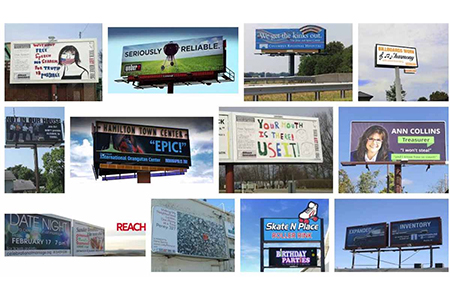
Role of Large-Format Print Advertising in Brand Visibility
Billboards and posters represent some of the largest forms of print advertising. They are impossible to ignore due to their sheer size and are often strategically placed in high-traffic areas. These ads are perfect for businesses looking to enhance brand awareness or promote a single, memorable message.
Advantages:
Massive Visibility: Billboards are often located in areas where they get seen by thousands of people daily, such as highways, busy city streets, and transit hubs.
Impactful: Their size and bold designs make them visually striking and memorable.
Constant Exposure: Unlike other forms of advertising, billboards provide constant exposure 24/7, meaning people will keep seeing your ad.
While billboards are great for brand visibility, they are best used for short, impactful messages that can be understood quickly.
Examples of Successful Print Advertising

Print is still a very effective medium to communicate with the audience, and some advertisements work very well. For instance, Coca-Cola's "Share a Coke" campaign, in which the name of every bottle was personalized, made it memorable and personalized. Another great example is the IKEA catalog, which is full of creative ideas with practical designs that customers can visualize in their homes. This makes the customer feel involved, and what could have been a rather straightforward catalog becomes an inspiring experience.
Again, Volkswagen's "Precision Parking" print ad campaign constitutes another piece of art. With witty, simple pictures, these ads comically express the accuracy features of the brand, doing much less talking and that much more communicating. Here is the best example for this the "Shot on iPhone" campaign of Apple, with breathtaking photographs of real users to bring into advertising user-generated content with a view to gain faith in the product.
Innovative Print Advertising Techniques
Creative techniques breathe life into print ads. Interactive elements bring any print ad to life, be it a scratch-and-sniff perfume sample or a QR code that can be scanned for something special on the web. Nivea printed advertisements for sunscreen used a UV-sensitive strip which would turn color once exposed to sunlight-this hence made the importance of sunscreen vivid and relevant.
Another is the optical illusion technique that captures attention and provokes a second look. For example, Jeep's "See What You Want to See" ads use very creative visual illusions to depict wild animals such that the spirit of adventure attaches to the brand.
Some ads have even incorporated texture or pop-out elements to engage the viewer to touch or play with the page. This is a fantastic way to impact the reader's psyche because it gets them involved in the message.
These innovative techniques keep print advertising fresh and exciting as it continues surprising people and engaging them differently than before.
Challenges and Limitations of Print Advertising
Print advertising was once the bedrock of advertising communications, but it has greatly been faced with a lot of challenges in this digital age. Two major challenges are:
Declining Readership
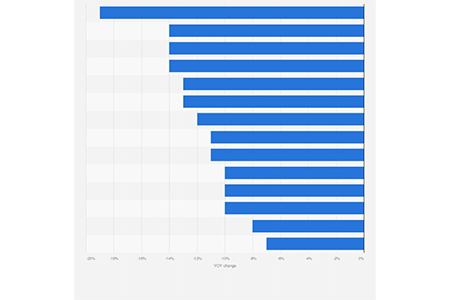
With the increased proliferation of digital media, people are interacting less with print-format content, including newspapers and magazines. Most consumers today acquire news and entertainment online, where information is updated instantaneously and available around the clock. This leads to the steady, continued decline in the readership for print media, thus reducing the reach and effectiveness of print advertising. This leads to fewer eyeballs viewing print ads, making it even harder to justify spending on traditional print channels when these are designed to target a very large audience.
Expensive
Print advertising is often more expensive than electronic advertising. First, it is costly to occupy physical space in a widely read magazine or newspaper, particularly in high-profile placements. Beyond this, there are the costs of printing and distribution, which never exist in electronic advertising. Finally, once a print ad is created, it can't be updated or reused, making its flexibility very limited in that it can only be run one time. Conversely, digital ads can be changed, targeted, and even measured for performance in real time-often at a fraction of the cost. Such is a huge cost consideration for small to mid-sized businesses when it comes to print advertising, especially when digital versions could be well controlled and where the return on investment would be much clearer.
Conclusion
Print advertising is a very strong element today, even in a world dominated by digital advertising. It affords businesses tangible, believable, and memorable interactions with their targeted audiences. Digital advertising may continue to expand, but the ability of print media to hold the reader's attention in a more targeted environment is crucial as part of any marketing mix strategy. It is through this that print could be included in marketing activities and can achieve wider brand visibility.
Excellent Publicity is your go-to advertising agency for impactful print advertisements that truly connect. With creativity and expertise, we create print ads that stop people in their tracks and build brand recognition. From newspaper ads to magazine placements, our team knows how to make your brand stand out.
Contact Excellent Publicity to boost your reach and give your audience something to remember.
FAQs
A print ad consists of written or printed materials in the form of newspapers, magazines, or even billboards, to convey its intended message. Digital advertisement occurs through online media, such as websites and social media platforms. Print is a real, tangible form, while digital is an interactive, flexible form of data-driven targeting and tracking.
Printed media is especially well-suited for small businesses because it will enable them to establish a presence in the local market, target specific demographics in communities, and gain trust, having an unforgettable physical presence that can catch the attention of customers in local publications or flyers to reach customers nearby and encourage visitation in-store.
Some of the key metrics are response rate (this being the involvement or calls from the customers), redemption rate (discounts or offers redeemed), brand recall, and reach (circulation numbers). Such ROI is based on sales lift, customer feedback, or specific tracking codes to assess the efficiency of the print advertisements.
Yes, print advertising still holds, most especially for niche markets and audiences in the local scene. Print ads are considered more believable and memorable by many than online ones, with less competition for people's minds. Print ads work best along with digital tools to provide a balanced, multi-channel approach.
To successfully print a campaign, one needs to have a clear goal and intended audience, a strong and concise message, and a design that captures one's attention. Use calls to action, track results with unique offers or codes, and ensure placement in publications that reach your intended market.


